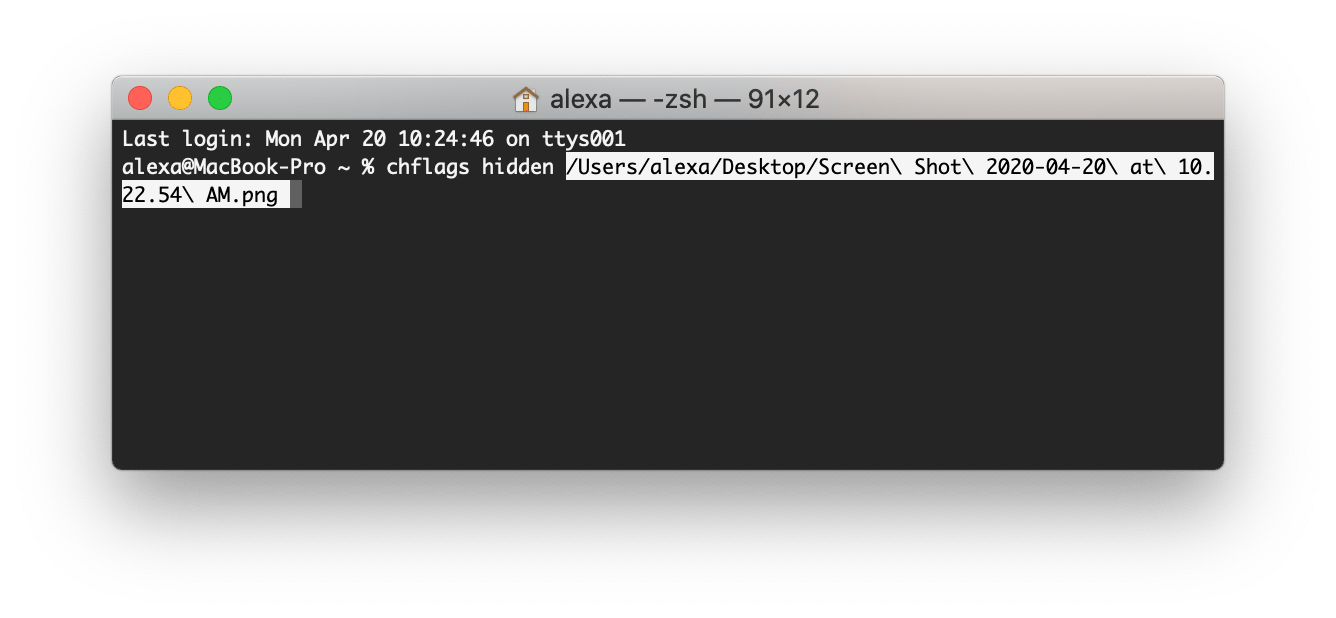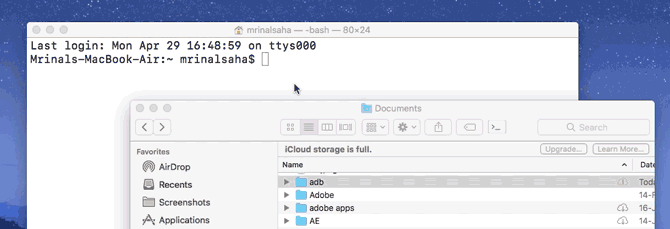
- #How to find file path in mac terminal how to#
- #How to find file path in mac terminal full#
- #How to find file path in mac terminal windows#
You can now copy this text based absolute folder path and paste it into your Terminal window. The path to the folder is highlighted and made clearer in the screenshot below: This is the path to the folder we have been looking for. You can see that the Get Info window contains the line “Where:” followed by the text folder path. This displays various bits of info about the folder as you can see below: Now we can simply press the “cmd+i” keys together to open up the “Get Info” window. It’s not pirated like so much Beachbody stuff unfortunately is!): In this example it’s the “month 1″ folder of my Insanity Workout folder (and yes, I did buy Insanity, directly from Amazon actually and these are my back-ups.
#How to find file path in mac terminal full#
The first thing to do is identify the folder you need to know the full path for. Here are the instructions for finding the file path on Mavericks and below.
#How to find file path in mac terminal how to#
Mavericks and below - How to find the Absolute Path to a folder on Mac OS X Instructions on how to use this can be found here. If you are a El Capitan user you are in luck, Apple has now created a specific command to capture the file path. El Capitan - Built in file path copy function Yosemite users must now follow a complicated procedure of creating a Service to do this simple task or take the path directly from the command line. Yosemite users special noteĪpple removed the ability to easily copy the file path in OS X Yosemite. You can have it show a graphical path, but getting just the text based path to a directory (for use in the Terminal for example) requires a couple of extra steps. So, before tweaking settings and changing files in the Library folder, make sure you know what you’re doing.Mac OS X doesn’t have an obvious way to view the exact text based path to a folder (otherwise known as a directory) in the finder window. The Library folder is hidden by default for a good reason. When you permanently show the Library folder in Finder, you can hit Cmd + Shift + L to open it in a Finder window, in addition to selecting the Library option on the Go menu. The Library folder now shows up in your Home folder in Finder windows, and the Library option becomes permanently available on the Go menu. Check the Show Library Folder box at the bottom of the dialog box. Then, go to View > Show View Options, or hit Cmd + J.Ī dialog box displays options you can set for your Home folder. Open Finder and head to your Home folder using the left pane or pressing Cmd + Shift + H. If you access the Library folder often, you can permanently show the Library option on the Go menu and the Library folder in your Home folder. Show the Library Folder Permanently in Finder
#How to find file path in mac terminal windows#
If you’re using a Windows keyboard with your Mac, press the Alt key. Keep the Option key pressed while you move your mouse down the menu and select Library. The Library folder shows up between Home and Computer on the Go menu. To temporarily show the Library option on the Go menu, open the menu and press the Option key. The Library folder is available on the Go menu in Finder, but it doesn’t show on the menu by default. Type: open ~/Library at the prompt and hit Enter.Īccess the Hidden Library Menu Option in Finder You can also use the Terminal to open the Library folder in a Finder window. You can work with the files in the Library folder directly on the command line. You can type: ls at the prompt to get a detailed folder listing. To access the Library folder directly in the Terminal, type: cd ~/Library at the prompt to switch to the Library folder. Go to Utilities > Terminal in the Applications folder. If you prefer using the command line, you can access the Library folder using the Terminal. If no Finder windows are open, a new one opens to the Library folder.Īccess the Library Folder Using the Terminal If you have one or more Finder windows open, the Library folder opens in the currently active window. Type: ~/Library in the Go to the folder box on the dialog box and click Go or press Enter.

Head to Go > Go to Folder, or hit Cmd + Shift + G. Open Finder or just click on the desktop. If you want to access the Library folder occasionally, you can use the Go to Folder option in Finder. For example, on my Mac, that would expand to /Users/lorikaufman/Library.Īccess the Library Folder Using the Go to Folder Option

The tilde (~) character is a shortcut for your home directory. The Library in your home folder is written as ~/Library. Today we’re going to cover different ways of accessing the hidden Library folder in your home folder and how to make it permanently available in Finder. So, if you decide you want to access the Library folder, be very careful. It’s hidden, so you don’t accidentally delete settings and data, damaging apps in the process. As of Mac OS X Lion (10.7), the Library folder in your home folder is hidden by default.


 0 kommentar(er)
0 kommentar(er)
